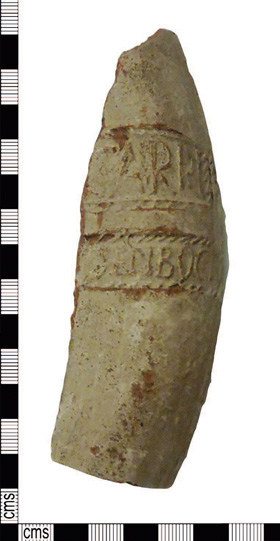
Yorkshire was part of the Roman Empire for nearly 400 years, and it was during this period that the region began to establish itself as of central importance to Britain.
When the Romans arrived in AD 48, what is now Yorkshire was occupied by two British groups: the Brigantes, who controlled most of the north, and the Parisii in the East Riding. It is generally assumed that the Roman occupation enforced changes upon the native population, but increasingly it is being seen as a period of mixing, adaptation and development, creating a distinctive Romano-British culture. British objects generally did not show drastic shifts in design, but rather a gradual incorporation of new styles. More noticeable changes include the rise of civil engineering and the development of larger road networks, alongside the importing of pottery and coinage from the continent.
The first Roman forts in Yorkshire were established at Templeborough and Rossington Bridge in the mid-first century AD, following expeditions from territory further south that was already under Roman rule. Previously, the Brigantian leader Cartimandua had supported the Romans but, when her tribe turned against her, the Romans felt it was time to stamp their authority on the area and the forts probably date from this time. The Romans finally took permanent control of the north in AD 71, building the fortress at York and making Eboracum , as they called the city, their northern centre. The road system was extended and improved to join the network of forts with the fortress. Eboracum was ideally placed to allow easy transportation of troops and supplies from the North Sea along the Ouse. It was also accessible by land, sitting on a ridge that the Romans used as their main approach to the city. This route is still largely followed by the A64 today. In fact, many major modern routes follow roads established by the Romans.

A copper-alloy dragonesque brooch from Burton Salmon, North Yorkshire, showing the continuation of Iron Age motifs on Roman artefacts (SWYOR-0E6FC5).

A map showing Roman roads overlaying the modern county boundaries of Yorkshire and the Roman sites mentioned in the text. (Ian Downes)
On sites unaffected by the Roman military, local manufacturing probably continued much as before, even selling products to the newcomers. Military bases were hives of industry that used a wide variety of materials, techniques and craftsmen, as well as recruiting labourers from the native population. Domestic manufacturing increased in the second century, with evidence of pottery making at various sites, including Doncaster, while the only known glassworks in Roman Britain was at Coppergate in York. In the fourth century, as imported goods declined in number, further local manufacturing emerged, such as the pottery industry at Crambeck.
In the mid-second century, administration centres were established at Aldborough and Brough on Humber, mirroring the earlier centres of power for the Brigantes and Parisii, while York remained the military headquarters of the northern Empire. Outside the forts and their civilian settlements, the roundhouse remained the most common building type; however, Roman-style stone buildings, known as villas, also appeared.

A fragment of a grinding bowl (mortaria ) dating from AD 140–160, made at Rossington Bridge, Doncaster, showing the name stamps of SARRIUVS , the principal potter, and SETIBOGIVS , the apprentice. It is held in the collection of Doncaster Museum and was photographed with their kind permission.

A silver denarius of Septimius Severus from Aberford, Leeds (SWYOR-28BC52).
York became internationally significant in AD 208, when Septimius Severus used it as a base from which to launch his military campaigns in Scotland. His expeditions were unsuccessful and, in AD 211, he fell ill and died in York. Following Severus’s death, his son Caracalla divided Britain into two provinces: the southern was Britannia Superior , and the northern Britannia Inferior , with York as its capital. In AD 306, Constantius I became the second emperor to die in York, with his son Constantine immediately claiming power. Constantine I was crowned emperor in York in the same year.
Towards the end of the Roman period, as Roman rule faltered under threat from various ‘barbarian’ tribes, both major settlements and rural sites declined. Signal stations – large, square timber and stone towers and courtyards surrounded by huge stone walls – were established on the east coast of Yorkshire to combat these threats. They were used as look-out posts, each with a beacon at the top of the tower, to send warnings of potential attacks.
By AD 402, no coinage was reaching Britain, suggesting that the army was not being paid, and gradually the Roman army was withdrawn, with the last forces leaving in AD 407. Though the Romans withdrew, enough of their influence remains, in architecture and infrastructure, and archaeologically, for us to gain a glimpse of life in Roman Yorkshire.

The Multangular Tower at the west corner of the Roman legionary fortress at York, as shown in a print dating from 1807 by Joseph Halfpenny. (York Museums Trust (Art Gallery) [CC By-SA 4.0] accession number: YORAG:R2351)